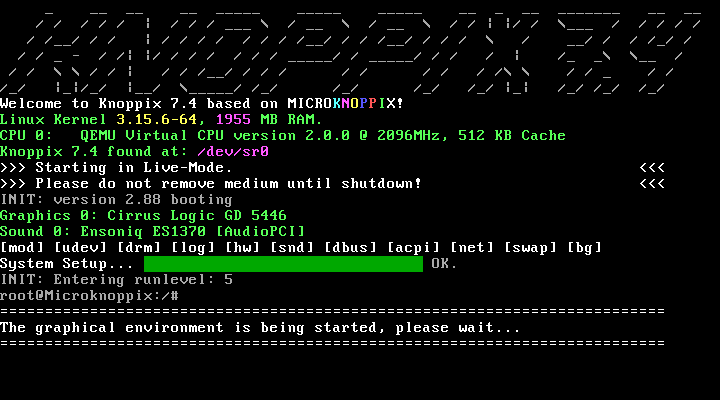

It was also possible to set up a "persistent home directory", where any documents or settings written to the user's home directory would automatically be redirected to a hard drive or removable media, which could be automatically mounted on bootup. This lack of persistence then made it necessary to save documents directly to a hard drive partition, over the network, or to some removable media, such as a USB flash drive. Prior to Knoppix 3.8.2, any documents or settings a user created would disappear upon reboot.
#Knoppix command wipefs serial
#Knoppix command wipefs software
1GB to use the web browser and productivity software.Intel/AMD-compatible processor (i486 or later).Minimum hardware requirements for Knoppix: LibreOffice, a comprehensive office suite.Network analysis and administration tools.

#Knoppix command wipefs free
KNOPPIX mostly consists of free and open source software, but also includes some proprietary software, as long as it fulfills certain conditions. Each main edition has two language-specific editions: English and German. As of version 9.1, CD images are being released once again. The CD edition had not been updated since June 2013 until recently. There are two main editions: the traditional compact-disc (700 megabytes) edition and the DVD (4.7 gigabytes) "Maxi" edition. Computers that support booting from USB devices can load KNOPPIX from a live USB flash drive or memory card. The decompression is transparent and on-the-fly.Īlthough KNOPPIX is primarily designed to be used as a Live CD, it can also be installed on a hard disk like a typical operating system. When starting a program, it is loaded from the removable medium and decompressed into a RAM drive. Knoppix was developed by, and named after, Linux consultant Klaus Knopper. KNOPPIX ( / ˈ k n ɒ p ɪ k s/ KNOP-iks) is an operating system based on Debian designed to be run directly from a CD / DVD ( Live CD) or a USB flash drive ( Live USB), one of the first of its kind for any operating system.


 0 kommentar(er)
0 kommentar(er)
